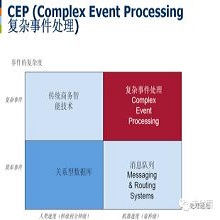Focusing on comprehensive networking, big data, and artificial intelligence, the Industrial Internet-of-Things (IIoT) facilitates efficiency and robustness in factory operations. Various sensors and field devices play a central role, as they generate a vast amount of real-time data that can provide insights into manufacturing. The synergy of complex event processing (CEP) and machine learning (ML) has been developed actively in the last years in IIoT to identify patterns in heterogeneous data streams and fuse raw data into tangible facts. In a traditional compute-centric paradigm, the raw field data are continuously sent to the cloud and processed centrally. As IIoT devices become increasingly pervasive and ubiquitous, concerns are raised since transmitting such amount of data is energy-intensive, vulnerable to be intercepted, and subjected to high latency. The data-centric paradigm can essentially solve these problems by empowering IIoT to perform decentralized on-device ML and CEP, keeping data primarily on edge devices and minimizing communications. However, this is no mean feat because most IIoT edge devices are designed to be computationally constrained with low power consumption. This paper proposes a framework that exploits ML and CEP's synergy at the edge in distributed sensor networks. By leveraging tiny ML and micro CEP, we shift the computation from the cloud to the power-constrained IIoT devices and allow users to adapt the on-device ML model and the CEP reasoning logic flexibly on the fly without requiring to reupload the whole program. Lastly, we evaluate the proposed solution and show its effectiveness and feasibility using an industrial use case of machine safety monitoring.
翻译:以综合联网、大数据以及人工智能为重点,工业电视互联网(IIoT)有助于提高工厂业务的效率和稳健性。各种传感器和现场装置发挥着中心作用,因为它们生成大量实时数据,能够提供制造方面的洞察力。复杂事件处理(CEP)和机器学习(ML)的协同效应在过去几年中得到了积极发展,目的是查明不同数据流的格局,并将原始数据纳入有形事实。在传统的计算中心模式中,原始外地数据不断被发送到云层并集中处理。随着IIoT装置越来越普遍和普遍,人们也提出了关切,因为传送这类数据是能源密集型的,容易被拦截,而且容易受到高悬浮度的。数据中心模式基本上可以解决这些问题,使IIT公司能够分散在设计ML和CEP上,将数据主要保存在边际模型上,并尽量减少通信。然而,这并非不言而论,因为大多数ITO边缘装置的设计是要以低电量消费的方式进行计算限制。本文提出一个框架,即在使用ML的ML服务器上,我们利用了ML的ML机变变变的ML系统。




